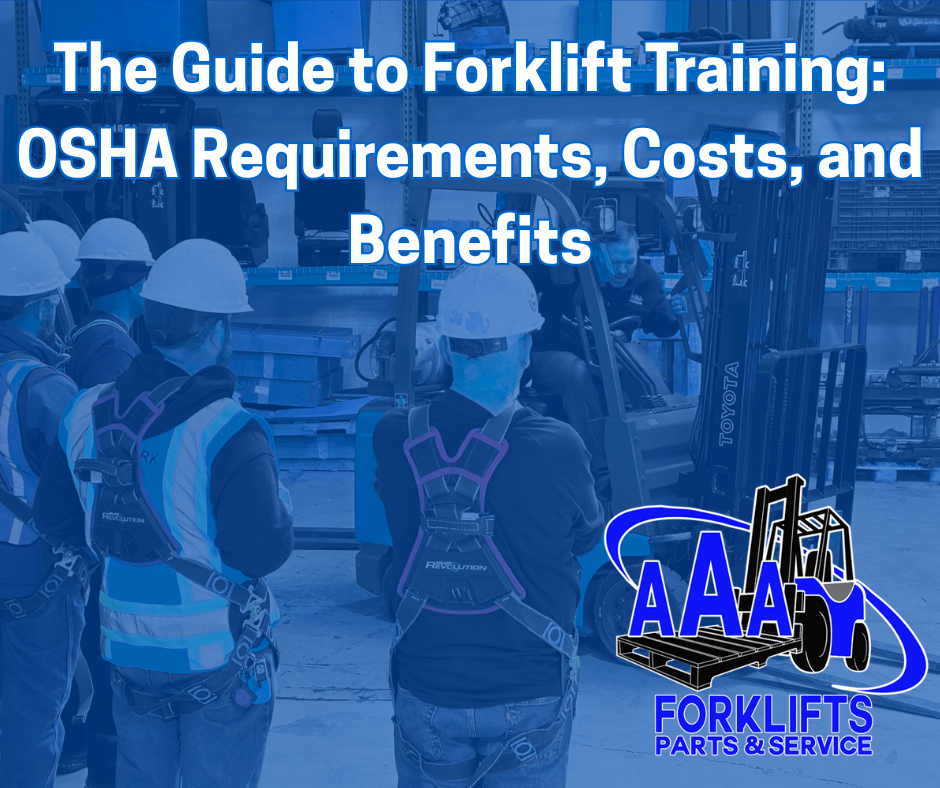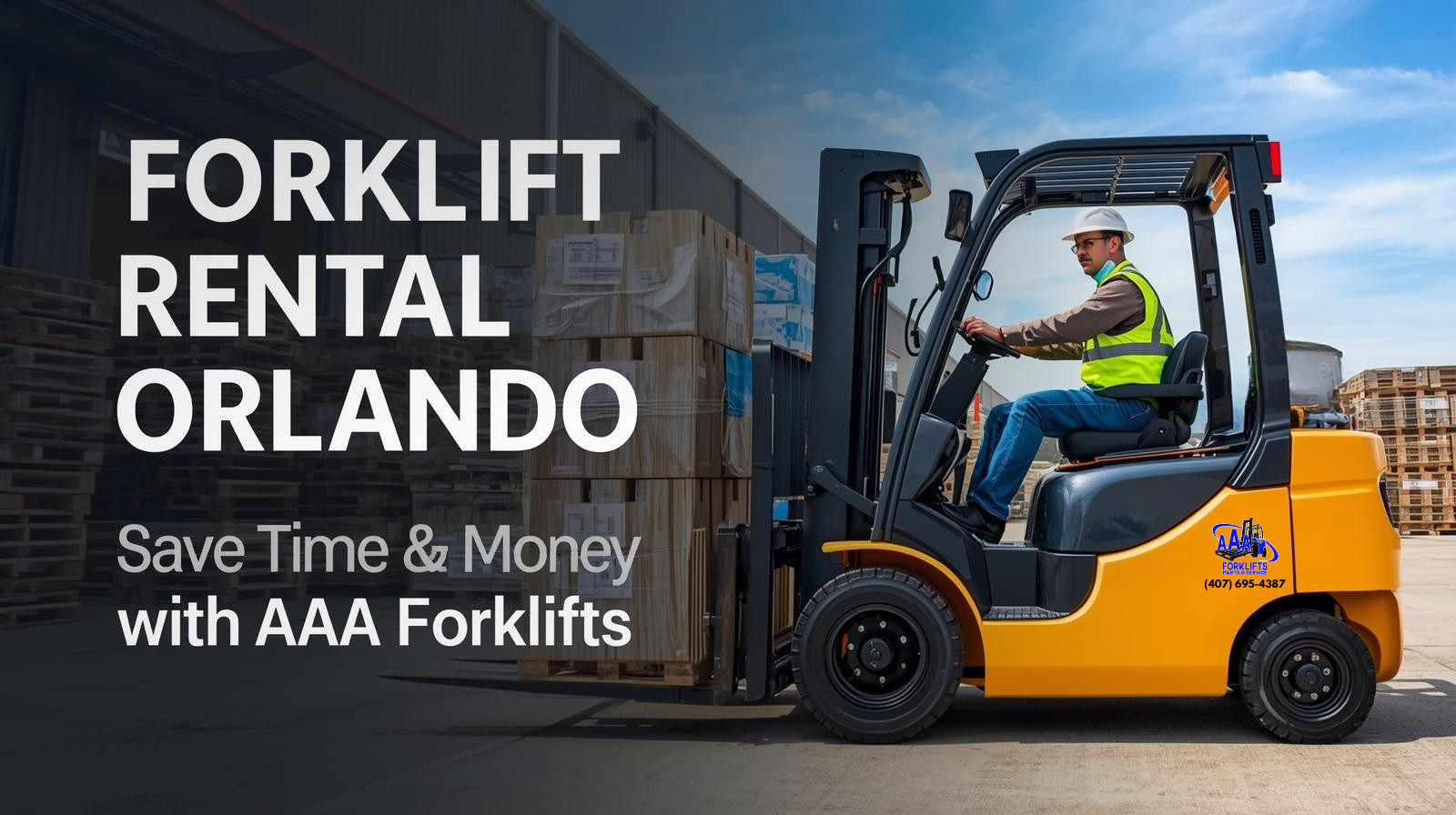The Guide to Forklift Training: OSHA Requirements, Costs, and Benefits
OSHA-compliant training protects your people, equipment, and schedule. This guide breaks down requirements, real timelines, costs, and what a high-quality class delivers—so you can get certified fast and operate safer.
Forklift training is more than a checkbox for compliance—it is a practical way to reduce accidents, protect people, and keep operations moving. Companies that invest in proper operator education see fewer damaged pallets and racks, fewer surprise breakdowns, and fewer expensive delays. Whether you manage a fleet or you are an individual operator building your career, this guide explains what OSHA expects, what a real training day looks like, how much certification typically costs, and why training through a reliable partner leads to safer, faster work.
Why forklift training matters
Forklifts are powerful machines that demand judgment and control. A single mistake can lead to tip-overs, struck-by incidents, product loss, or injuries that halt production. Training addresses these risks by teaching operators to read load capacities, understand stability triangles, approach racking correctly, make safe turns, and avoid blind-spot surprises. The result is a workplace that runs with fewer near misses and a culture that values safety as a competitive advantage rather than a cost.
What OSHA requires
OSHA requires every powered industrial truck operator to complete formal instruction, hands-on practice, and a performance evaluation. Formal instruction covers essential theory such as hazard recognition, truck components, and safe operating practices. Practical training places the operator in the seat and focuses on maneuvering, load handling, and workplace-specific hazards. A qualified evaluator signs off only when the operator demonstrates competence. Certifications must be renewed at least every three years, and refresher training is required sooner if an operator is involved in an incident or if the work environment or equipment changes in a way that affects safety.
For official guidance straight from OSHA, see Powered Industrial Trucks (Forklift) — Training Assistance.
Quick facts: most classes finish in one day; certification lasts up to three years; refresher training is required after incidents or significant changes in equipment or layout.
How long training takes and what it includes
Most complete programs can be finished within a single day. The morning typically concentrates on the classroom portion with discussion, examples, and scenario walkthroughs. The afternoon is dedicated to supervised driving, controlled practice, and an evaluation that verifies the operator can perform safely. Expect a quick pre-use inspection segment, a demonstration of safe load lifts and lowers, slow controlled turning, balanced stacking and staging, and parking procedures. A written assessment and skills check close the session, and successful participants receive proof of training and evaluation.
Typical costs and why they pay off
Certification fees in Florida commonly range from about $150 to $300 per operator depending on format and group size. On-site courses can lower total cost when multiple operators are trained at once, because they eliminate travel time and adapt the session to your actual aisles, racking, and fleet. Ask Us for details. Compared with the cost of a single incident—lost shifts, product damage, equipment repairs, insurance friction, and potential OSHA penalties—training is a low-risk investment that pays for itself quickly.
Training formats: shop, on-site, and blended
Some companies prefer sending operators to a dedicated training shop. This can work well when schedules are flexible or when only one or two people need certification. Many Florida businesses choose on-site training so operators learn on the exact trucks and floor plans they use every day, which accelerates confidence and reduces surprises. A blended approach pairs online theory (for convenience) with an in-person evaluation, giving teams flexibility without sacrificing the hands-on portion OSHA requires.
What a high-quality class teaches
A strong program emphasizes hazard awareness first, then layers in skills. Operators learn daily inspections, including forks, chains, hydraulics, tires, data plates, and alarms. They practice stable approaches to racks and docks, smooth acceleration and braking, controlled reversing with proper looks, horn use at intersections, and steady mast operations under load. They also learn how surface conditions, slopes, and tight spaces change safe limits, and they rehearse simple communication habits that prevent aisle conflicts and collisions with pedestrians.
Schedule Your Forklift Training
When refresher training is needed
Every three years is the default renewal interval, but your calendar should move sooner if something important changes. An incident, a near miss, a new truck class, a new attachment, or a layout change that tightens clearances all justify earlier training. Refresher sessions are usually shorter because they focus on the gap that triggered the update: reinforcing the habits that keep people safe under new conditions.
How training reduces downtime and damage
Good operators make fewer hard stops, fewer mast shocks, and fewer pallet scrapes. Over a month, that translates into less tire wear, fewer bent forks, fewer hydraulic leaks, and fewer headaches for maintenance. Production speeds up because drivers stage loads predictably, communicate clearly, and spend less time correcting errors. Supervisors spend fewer hours investigating issues, paperwork drops, and planned maintenance becomes more routine than reactive.
Choosing the right provider
Look for trainers who tailor content to your truck classes and attachments and who evaluate skills on the floor where the work happens. Ask about the balance between classroom time and hands-on practice. Confirm that the evaluation meets OSHA’s requirements for both instruction and performance. Finally, make sure you receive documentation that is simple to store, easy to verify, and straightforward to renew when the time comes.
Forklift training in Central Florida
AAA Forklifts supports teams across Orlando, Tampa, and the rest of Central Florida. We align training with your fleet, your racking, and your pace of operations, so your people gain confidence on the exact equipment they use every day. If you prefer an off-site session, we can arrange that, but most customers choose on-site instruction for speed and relevance.
Tip: On-site sessions minimize downtime and tailor skills to your aisles, slopes, and attachments—accelerating safe performance.
What to expect on training day
Expect a clear agenda and a practical tone. Operators sign in, review safety goals, and walk through key concepts with examples drawn from real warehouses and yards. The instructor then leads a pre-use inspection on one of your lift trucks, pointing out wear points that operators often miss. The skills portion is steady and calm: gentle starts, precise stops, square approaches to racks, stable lifts and lowers, and confident placement. The day closes with a short knowledge check and a skills evaluation. Successful operators receive documentation that is simple for your records and easy to present during audits.




Deja un comentario
Este sitio está protegido por hCaptcha y se aplican la Política de privacidad de hCaptcha y los Términos del servicio.